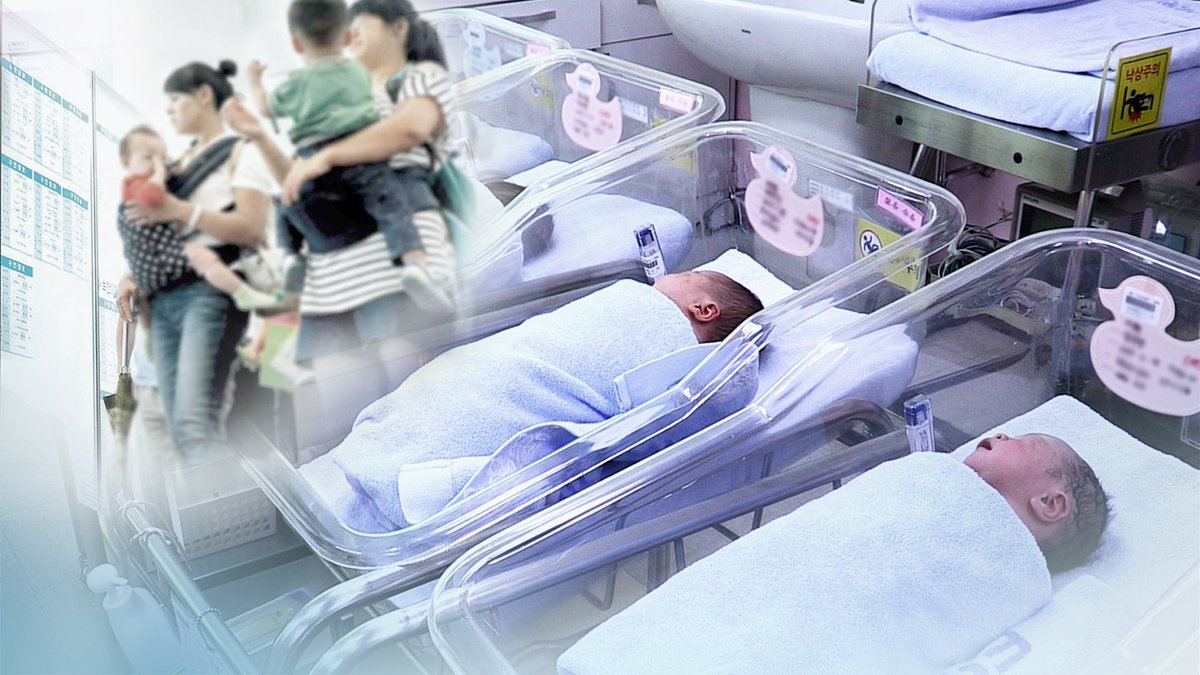 |
(Yonhap) |
South Korea's total fertility rate hit a record low last year as the number of childbirths continued to fall, data showed Wednesday, underlining the country's bleak demographic situation.
The country's total fertility rate -- the average number of children a woman bears in her lifetime -- came to 0.81 last year, down from 0.84 the previous year, according to Statistics Korea.
It marked the lowest since 1970 when the statistics agency began compiling related data. Last year marked the fourth straight year the rate was below 1 percent.
South Korea was the only country whose total fertility rate stayed below 1 percent among 38 member countries of the Organization for Economic Cooperation and Development (OECD).
As of 2019, the total fertility rate among OECD nations averaged 1.61.
The agency earlier forecast the country's total fertility rate will likely nosedive to a record low of 0.7 in 2024 before rebounding to one in 2031.
The country's crude birth rate -- the number of births per 1,000 people per year -- also reached an all-time low of 5.1 last year, down from 5.3 a year ago.
The data underscore the country's gloomy demographic pictures amid its chronically low childbirths and rapid aging.
Many young South Koreans delay and give up on getting married or having babies amid a prolonged economic slowdown and skyrocketing housing prices.
In 2021, the number of newborns in South Korea reached a record low of 260,500 in 2021, down 11,800 or 4.3 percent from the previous year. the data showed.
Last year, an all-time high of 317,800 people died, up 12,800 or 4.2 percent from a year earlier.
This resulted in a decline of 57,300 in the country's population last year, larger than a fall of 33,000 in 2020.
Since South Korea reported the first natural decline in the population in 2020, the country has seen the number of deaths outpace that of childbirths.
"This trend is expected to continue as the number of newborns will keep declining and deaths will likely rise amid rapid aging," Noh Hyung-joon, a Statistics Korea official, told a press briefing.
A fall in the fertility rate is feared to accelerate a major drop in the working-age population, a phenomenon known as a demographic cliff. A fall in the working population means a decline in labor supply, potentially undercutting economic growth.
South Korea's total population is estimated to have recorded its first decline last year due to low births, fast aging and a decline in incoming foreigners amid the pandemic. Its total population is presumed to have peaked at 51.84 million in 2020.
The country's working-age population or people aged 15 to 64, came to 37.4 million in 2020, accounting for 72.1 percent of the total population. Such population is forecast to continue to fall and reach 17.4 million in 2070, down 53.5 percent from 2020 levels. (Yonhap0



![[Herald Interview] 'Trump will use tariffs as first line of defense for American manufacturing'](http://res.heraldm.com/phpwas/restmb_idxmake.php?idx=644&simg=/content/image/2024/11/26/20241126050017_0.jpg)

![[Health and care] Getting cancer young: Why cancer isn’t just an older person’s battle](http://res.heraldm.com/phpwas/restmb_idxmake.php?idx=644&simg=/content/image/2024/11/26/20241126050043_0.jpg)

